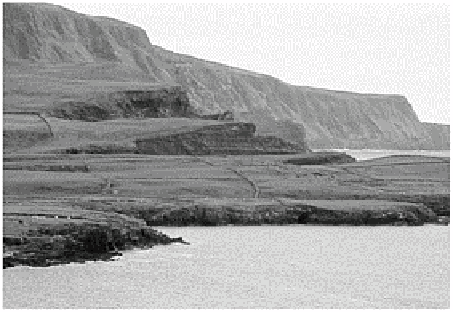Environmental Engineering Reference
In-Depth Information
m to −60 m from 15,000 to 9000 radiometric years BP (using AD 1950 as the index year)
and exceeding 20 m ka
−1
during catastrophic ice sheet collapse
c
. 12,500 BP. Sea ice
formation/melt has a negligible eustatic effect since it replaces virtually its own volume
of water.
ISOSTATIC CONTROL OF SEA LEVEL
Isostasy is the gravitational equilibrium between crustal lithosphere of different
thickness/density, and therefore 'buoyancy', through vertical or lateral adjustments in
adjacent lithosphere. At the largest scale this explains why thin, dense oceanic lithosphere
'floats' lower than thicker, less dense continental lithosphere, hinted at by the bimodal
('twin peak') nature of the hypsometric curve. Either form of crust can also be
loaded/unloaded by the addition or removal of water, ice, rock mass or sediment, causing
isostatic depression or uplift. Response is more
Plate 11.2
Evidence of progressive sea-level lowering due to
isostatic and eustatic processes during the Quaternary. At
least five raised marine wave-cut platforms are visible here
on the Atlantic coast of Kerry, Ireland.
Photo: Ken Addison.
complicated than eustatic change, since it depends on flow or
creep
of ductile crust. This
is both slow and, by its nature, extends beyond the exact area of load change. Although
far from instantaneous and world-wide, it does alter ocean basin geometry.
Flexural
isostasy
due to lithosphere creep away from or towards the increase/ decrease in load
causes
fore-bulge
or
downwarp
beyond its margins (Figure 11.6).

